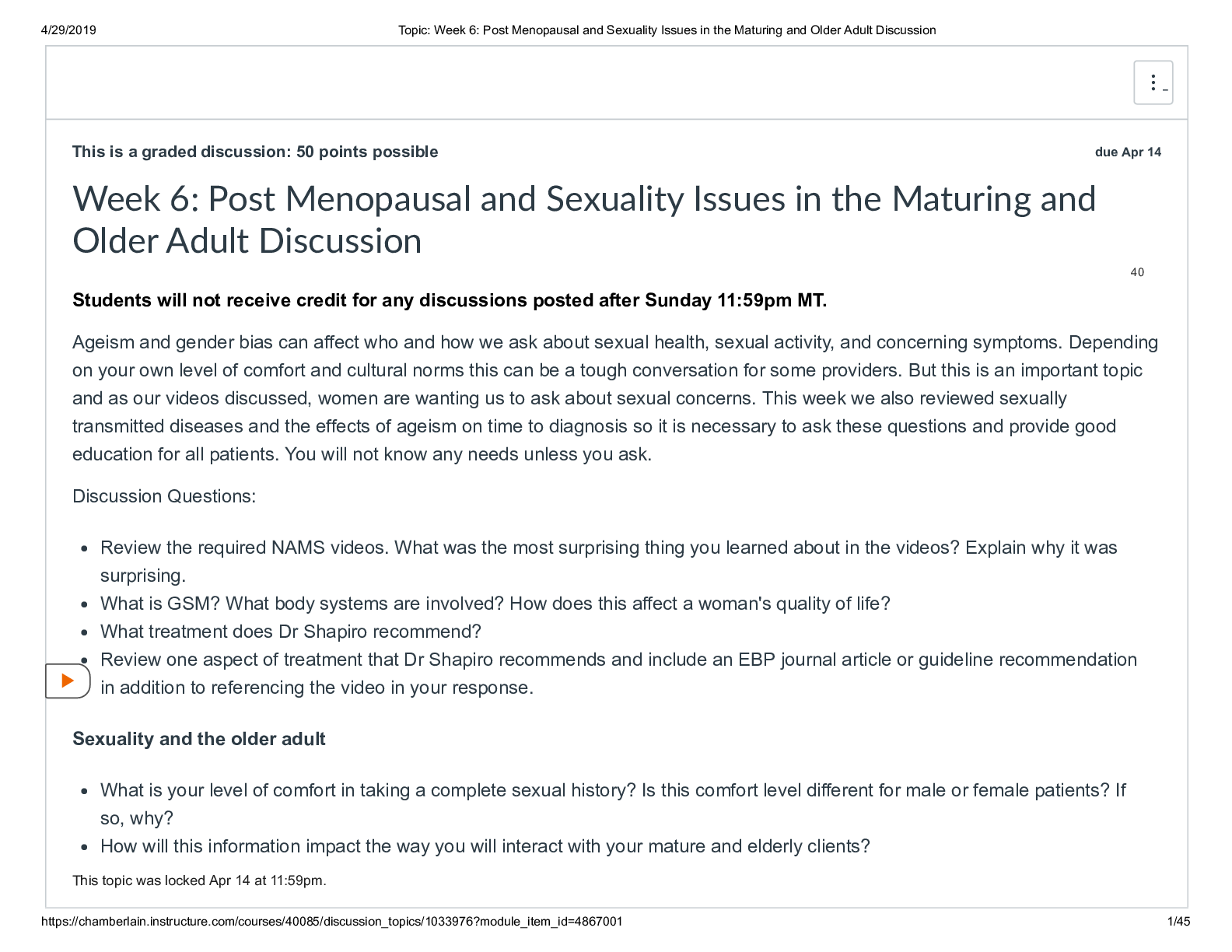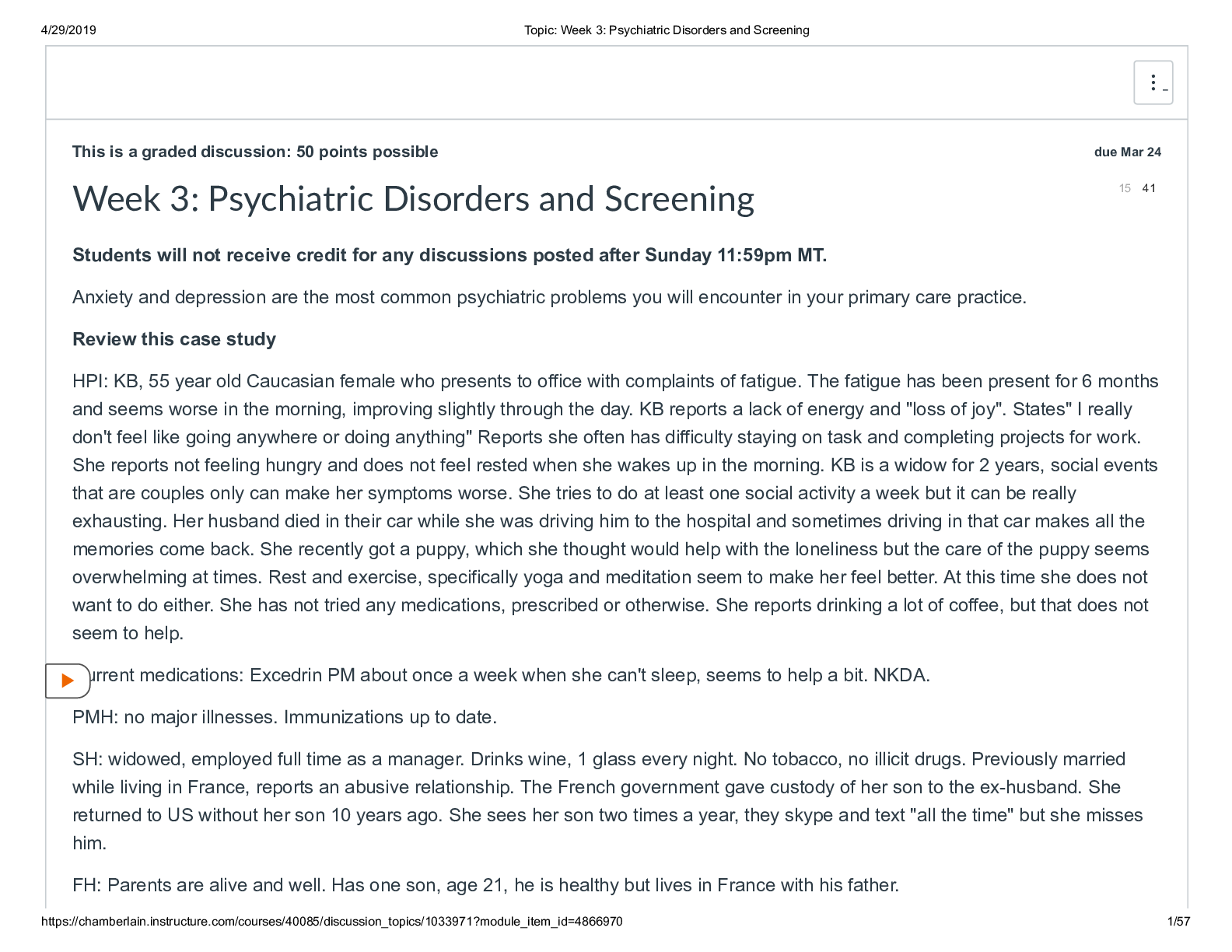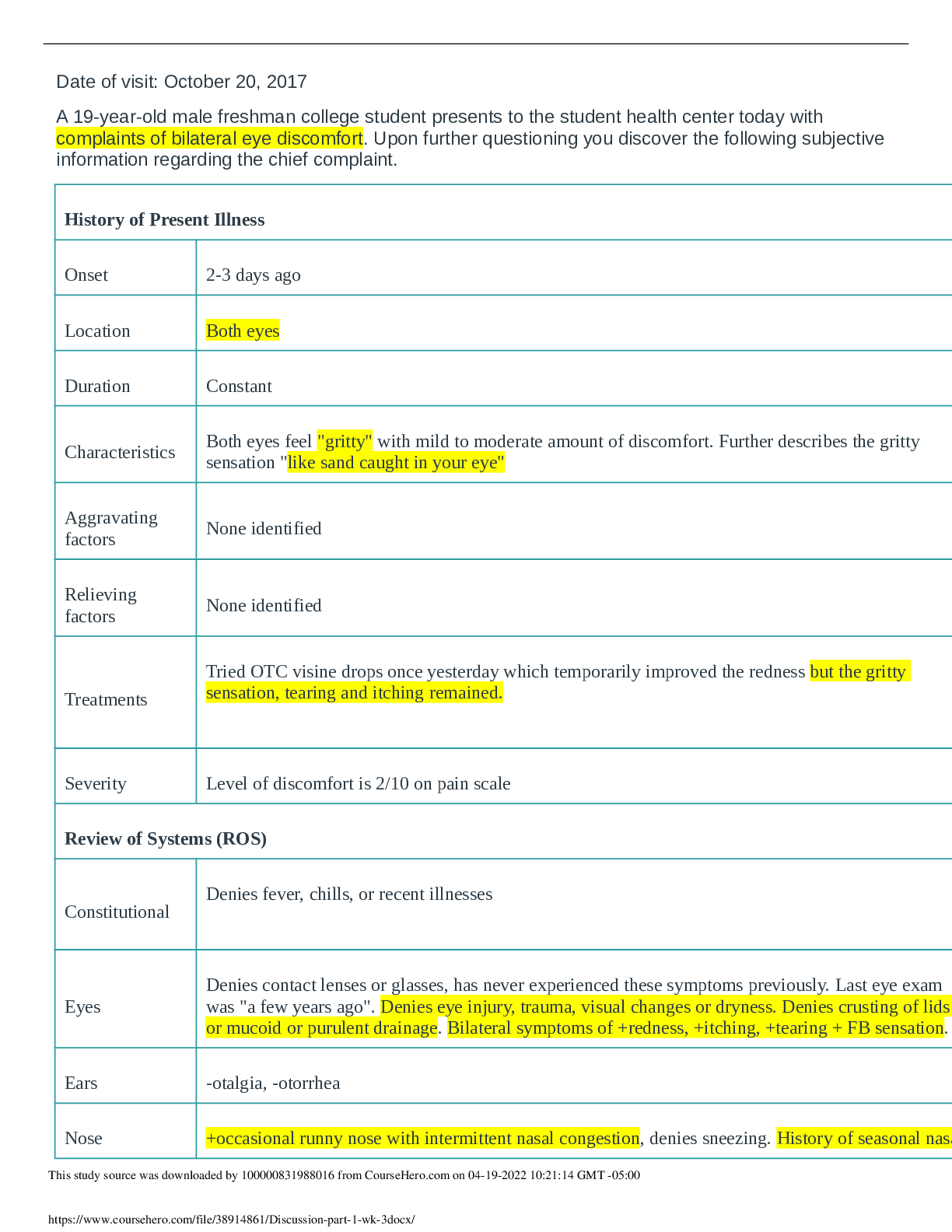*NURSING > DISCUSSION POST > Chamberlain College of NursingNUR 601Week 2 Polypharmacy Discussion. (All)
Chamberlain College of NursingNUR 601Week 2 Polypharmacy Discussion.
Document Content and Description Below
Week 2 Polypharmacy Discussion Polypharmacy is a common concern, especially in the elderly. List the definitions of polypharmacy you encounter in your readings. There is more than one. o Polyph... armacy, the use of multiple pharmacies (in this case providers and selfprescribers) is a public health concern. Multiple prescribers, use of over-the-counter medications, and readily available supplements are all challenges of prescribing for older adults ( Chamberlain College of Nursing, 2018). o Polypharmacy, multiple providers and prescribers, adherence and cost, use of overthe-counter medications, and readily available herbals and supplements are all the challenges of prescribing for older adults (Terrery & Nicoteri, 2016). o the use of multiple medicines, commonly referred to as polypharmacy is common in the older population with multimorbidity, as one or more medicines may be used to treat each condition (Masnoon, Skakib, & Caughey, 2017). Discuss three risk factors that can lead to polypharmacy. Explain the rationale for why each listed item is a risk factor. This is different than adverse drug reactions. ADRs can be a result of polypharmacy, and is important, but ADRs are not a risk factor. • Self-Medication. Rationale; Many patients buy their own prescribed medicine from the chemist close to their location, and thus they are at risk of polypharmacy. Due to the rising cost of medication patients are more likely to take medications they may have been prescribed in the past leading to self- medication (Maher, Hanlon, & Hajjar, 2014). • Chronic comorbidities. Rationale; instance a patient with hypertension, heart failure, hyperlipidemia, obstructive sleep apnea, and diabetic is likely to be a subject to polypharmacy. In which patients have multiple providers each of the providers may still have paper charts or EMR’s in which are separate entities and do not share the information with the patient’s other physicians regarding the visit to have continuity of care resulting in polypharmacy (Maher, Hanlon, & Hajjar, 2014). Old age. Rationale; The elderly are at risk of polypharmacy since they may use both herbal medicines and the modern medicines and also, they may have the cognitive impairments that make them unable to make the right judgments on which drugs to take, the right quantities and the right time (Maher, Hanlon, & Hajjar, 2014). Discuss three action steps that a provider can take to prevent polypharmacy. o Reviewing of patient treatment sheet to prevent duplication of medication upon any transition to any medical facility or even the chemist to avoid polypharmacy. The brown bag review is having the patient bring in their medications to the visit review them and gather the medication or have the medication history taken by the pharmacist (McGrath, Hajjar, Kumar, Hwang & Salzman, 2017) [Show More]
Last updated: 2 years ago
Preview 1 out of 7 pages

Buy this document to get the full access instantly
Instant Download Access after purchase
Buy NowInstant download
We Accept:

Reviews( 0 )
$10.00
Can't find what you want? Try our AI powered Search
Document information
Connected school, study & course
About the document
Uploaded On
Aug 30, 2021
Number of pages
7
Written in
Additional information
This document has been written for:
Uploaded
Aug 30, 2021
Downloads
0
Views
76





.png)
.png)


.png)



